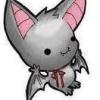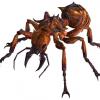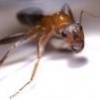Now, first. It is possible I got two different species, if Solenopsis molesta was nesting with them. As me and my wife looked in a microscope and one queen and a worker had three segmented antennas, but two other workers only had two segmented antennas.
I found them in an urban area, near an exotic plant garden (people can walk around it), with lots of Argentine ants around. They were found in Los Angeles California, in an irrigated sandy area. The colony went about 10 feet in length along the sidewalk, and they were up on the hillside as well. They had small mounds all over. The workers do sting/bite (had one hurt surprisingly a lot for a tiny ant and happened to my wife too). But, the queen and one worker we used a microscope on (a really high quality microscope, can even see the inside of the ant) had a three segmented antenna (100% positive on this). Except, two other workers we looked at had only two segmented antennas.
Also, the workers are reddish in color, with a black abdomen. And, when looked at in a microscope, they are more yellow than red. The queens are mostly brown, with a darker colored head and a darker abdomen. A few of the queens are more yellow. They have a lot of queens in each colony, I got over 30 of them. The workers themselves are 2-3 MM long (there is about a 1 mm difference) and the queens are about 7 or so. The workers are actually about the same size as Monomorium ergatogyna workers. The queens might be about the same size as M. ergatogyna queens as well, maybe a little bit bigger.
The ants tend to cling onto each other like you'd see Army ants do. I can scoop up a bunch and they all cling and hang on like a chain and ball of ants. Also, I didn't see this myself and my wife isn't really into ants. So I'm not sure how accurate this can be. But, the queen had mandibles going straight as "normal". But, the worker(s) had mandibles facing downward.
Also another detail. My wife discovered that they have a very similar "feature" that Nylanderia fulva do. They do not appear to have a stinger, but this weird fluffy thing at the end of their abdomen...no idea how to describe it, but, I see Nylanderia fulva have about the same looking thing we saw in the microscope. However ,my ants have two petioles (that is 100% sure). Unless it is just a little stub of a stinger, the microscope wasn't fully in focus of it and was hard to make out what it was. If it was a stinger, it was pretty tiny, but explains the painful sting.
Any idea on an ID from this?
Edited by Vendayn, June 6 2015 - 2:08 PM.





















